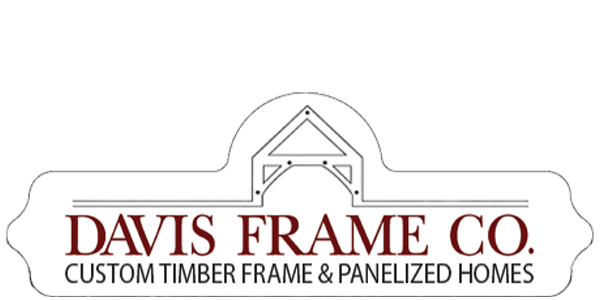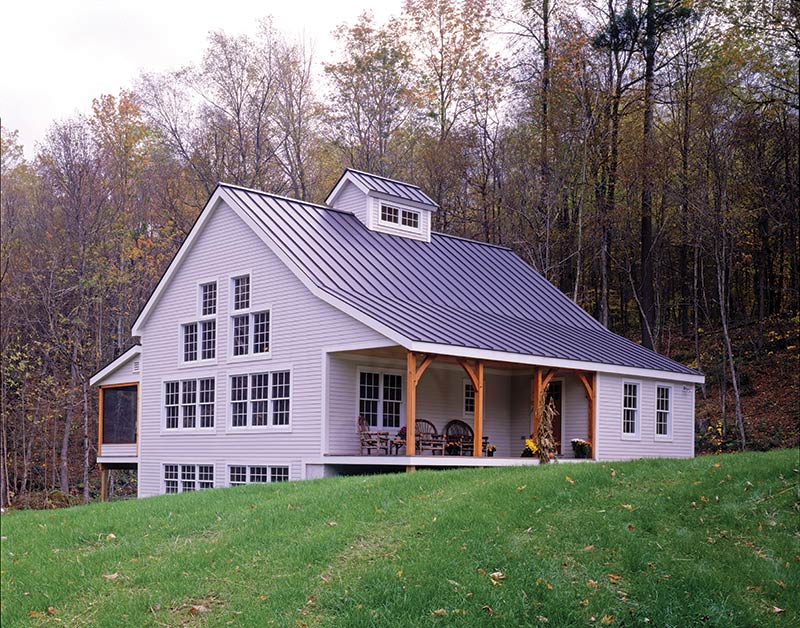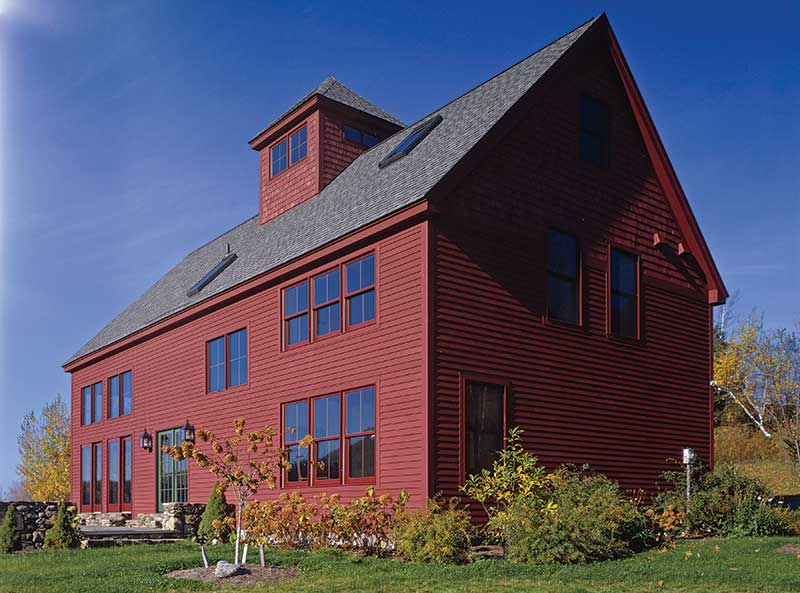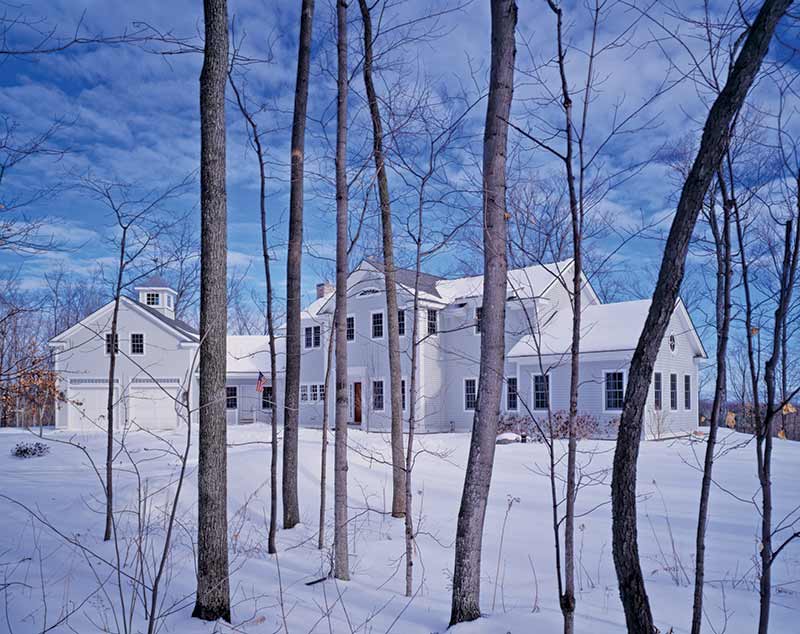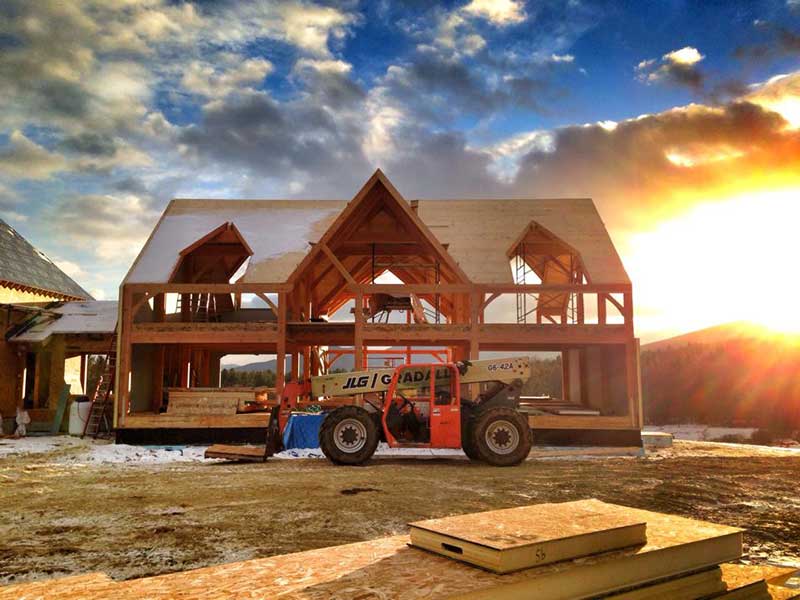You may be surprised how much of our lives are dwelt in the bathroom. According to one survey, the average adult spends about 30 minutes a day in this room, and one in four adults spends up to an hour a day. Not only do bathrooms offer specific functionality, they also make great “escape” rooms, It’s no surprise adults with children are more likely to spend extra time in the bathroom 😉 — Be sure to prioritize this private space!
A well-designed and thoughtfully decorated bathroom can become an inviting, relaxing, and even invigorating sanctuary to start and end your day in. Laying out the perfect bathroom can be one of the most rewarding and challenging experiences of designing a timber frame home. Below are some things to consider when planning.
Size
The size of your bathroom will likely be the most determining factor in what is possible. When planning your bathroom, be sure to consider the size and be reasonable. If you’re hoping for a particular tub with a separate shower, plan to have the appropriate space ahead of time. This is much more practical and cost-effective than trying to piece it all in or wanting to remodel down the road.
Door Clearances
Plan your door sizes with intention. Be sure to also consider how you’ll get bathroom fixtures in and out. Think ahead, If you’re likely to want an upgraded vanity, tub, or shower insert in the future, making sure your doorway is large enough to accommodate these can save you lots of energy and money in the future.
Make sure to check your local codes too! Often, size requirements for bathroom doors are a bit smaller than other interior doors. The International building code may call for a 24″ minimum for bathroom doors, but your local codes or the ADA could require a wider entrance for medical equipment. The National Kitchen and Bath Kitchen Association recommends 34″. Many contractors suggest going with 36″ as it’s widely available.
Showers
When considering a shower for your timber frame home, you’ll want to be especially conscientious of leak potential. Timber frame homes are known to settle slightly. This is quite normal, acceptable, and even a benefit from some perspectives. When it comes to choosing a shower, however, it’s best to take this into consideration during the planning stages. While tile and grout may be suitable for less eco-friendly brick and mortar homes, the grout tends to be fragile and crack as a timber home settles. In a shower, this can lead to several costly problems down the road. Be sure to choose a shower option that will be flexible enough to remain leak-proof throughout your home’s lifetime.
One-piece, “pre-fab” shower stalls or shower/bath combos generally remain the most leak-proof and are optimal for ensuring it stays watertight over the lifetime of your home. They generally are cost-efficient but offer limited looks. As these are one-piece, consider the size and timing of bringing this into the space as the doorways and staircases may not accommodate this option.
Shower kits with panels offer more options and some high-end looks. These don’t present the same challenge as the single piece, since they come in flatter components assembled in the bathroom. Be sure to maintain any joining areas and talk to your contractor about keeping the enclosure watertight.
There are several “standard” styles of showers. These include shower enclosures, bath/shower combinations, corner showers, and shower kits that are generally highly customizable. Standard” size for a shower enclosure starts at 36″x36″ — while International Residential Code may specify 30″x30″ as the minimum, the ADA calls for 36″x36″, so this size is generally more common. Other common sizes are 36″x48″ and 48″x48″. Always be sure to check your local codes for your situation.
The Tub
60″ x 32″ is a very common “standard” size tub. Depending on the size of your bathroom and your budget though, you may want to consider other options. Longer tubs are available, 72″ length is popular. Oval tubs are generally a bit wider at approx. 41′. Larger corner tubs are a luxurious option, usually close to 60″x60″. You don’t even have to limit yourself to those options. Specialty tub designs exist to accommodate smaller, larger, deeper. Eliminating the tub entirely is a huge space saver and a great option for people who don’t take baths or are limited on space. If you’re considering a shower/tub combination or putting material up around the tub, avoid tile and grout. Explore options for single-piece panels and prioritize keeping the space watertight over time. Considering the settling nature of a timber frame home in the planning stages of your bathroom can avoid costly repairs in the future.
Sinks & Vanities
21″ is a very standard counter depth for bathrooms. However there are several options ranging from 18-24″. Widths vary even more, several standard widths between 18″-72″ accommodating one or two sinks. If you want two sinks, you’re not stuck with having one large vanity either— consider a layout with two separate, smaller vanities.
Toilets
Most homes assume a “standard” plumbed toilet, but there are a surprising number of options out there. Depending on your location, goals, or specific requirements, you may want to consider a composting, incinerating, or even “smart” toilet.
Standard plumbed toilets fall in the 22-29″ range from the back of the tank to the front of the seat. Width is generally 20-24″. Again, there are exceptions to this, and be sure to check your local codes regarding spacing and clearances required. It’s reasonable to expect space between other fixtures to be at least 15″ from the center of your toilet and a clearance of 24″ in front of it – excepting a door swing.
Plumbing
Typical plumbing in a home structure includes at least one interior wall, a little thicker than the rest, that accommodates the pipes for getting water to areas of the house, such as bathrooms. Be sure to consider this when laying out your bathroom. Many times, it’s a cost-efficient strategy to have bathroom fixtures requiring water along this wall.
Sources and great references include
https://www.homeadvisor.com/r/standard-shower-sizes/
https://www.thespruce.com/types-of-showers-4799624 (try to avoid a wet room situation!)
https://www.thespruce.com/bathtub-sizes-reference-guide-1821342
